Choosing the Right Batting for Your Quilting Project
When it comes to quilting, one of the most critical decisions you'll face is choosing the right batting. This often-overlooked element can make or break your project, affecting everything from warmth to overall aesthetics. Imagine your quilt as a cozy hug; without the right batting, that hug could feel flat and uninspiring. In this article, we'll explore the various types of batting available, helping you make an informed decision based on your project's needs, desired finish, and personal preferences.
Batting comes in a variety of materials, each with its unique characteristics. The most common types include cotton, polyester, and blends. Cotton batting is known for its breathability and natural feel, making it a favorite among traditional quilters. On the other hand, polyester batting is often more affordable and resilient, providing a great option for those who want durability. Blends combine the best of both worlds, offering a balance of warmth and breathability. Understanding these types is essential for choosing the right one for your project, as they each offer different qualities that will affect the final outcome of your quilt.
When selecting batting, several factors come into play that can significantly influence your quilt's appearance and functionality. Consider aspects like warmth, weight, and loft. Each of these factors plays a role in guiding you toward the best choice for your specific project. For instance, if you're making a quilt for a chilly winter night, you'll want to prioritize warmth and loft, ensuring that your quilt is both cozy and inviting. Conversely, if you're crafting a quilt for warmer months, a lighter, more breathable option may be more suitable.
The warmth provided by batting is crucial, especially for quilts intended for colder climates. Think of your quilt as a protective layer against the chill; the right batting can make all the difference. Different materials have varying abilities to retain heat. For example, cotton batting tends to provide moderate warmth, while polyester batting can offer a higher level of insulation. Understanding how different materials retain heat can help you select the best option for your needs, ensuring that your quilt serves its purpose effectively.
Loft refers to the thickness of the batting, and it plays a significant role in the overall look and feel of your quilt. High loft batting creates a fluffy appearance that can add a sense of dimension and warmth. Imagine it as the difference between a thick, fluffy pillow and a flat, thin one; the former invites you to snuggle in, while the latter may leave you feeling a bit underwhelmed. On the other hand, low loft batting offers a flatter finish, which can be ideal for projects where you want a more streamlined look. This choice can impact both the quilt's aesthetics and its warmth, so consider how you want your quilt to feel and appear.
Breathability is another essential factor for comfort. If you're someone who tends to get hot while sleeping, opting for a more breathable batting is crucial. Natural fibers like cotton are known for their breathability, making them ideal for quilts used in warmer conditions or for those who prefer a cooler sleep environment. Think of it as choosing between a cozy wool sweater and a light cotton T-shirt; the latter allows for better airflow, keeping you comfortable and cool.
Selecting the correct size of batting is crucial for your quilt's dimensions. You wouldn't want to bake a cake in the wrong-sized pan, right? The same principle applies here. Ensure you measure accurately to avoid excess bulk or insufficient coverage when assembling your quilt layers. A well-fitted batting will not only make your quilt look polished but will also enhance its functionality.
For those looking to elevate their quilting game, specialty batting options like fusible or organic batting cater to specific needs and preferences. Exploring these alternatives can enhance your quilting experience and the final product's quality.
Fusible batting is a game-changer for many quilters. It simplifies the quilting process by adhering to fabric layers, reducing shifting during quilting. This feature is especially beneficial for beginners or those looking for efficiency in their projects. Imagine being able to quilt without constantly adjusting your layers; fusible batting makes that dream a reality!
For the environmentally conscious quilter, organic batting options are a fantastic choice. Made from sustainable materials, these batts provide a guilt-free option without compromising on quality or performance. By choosing organic batting, you're not just creating a beautiful quilt; you're also making a positive impact on the planet. It's like wrapping yourself in a cozy blanket while giving Mother Earth a warm hug!
Proper care and maintenance of your quilt, including washing and storage, can extend its lifespan. Understanding how different batting materials react to cleaning is essential for preserving your creation. For instance, while cotton batting may hold up well in the wash, polyester batting might require a gentler approach. Always check the care instructions specific to your batting type to ensure your quilt remains as beautiful as the day you finished it.
- What type of batting is best for beginners? Cotton or fusible batting is often recommended for beginners due to its ease of use and forgiving nature.
- Can I use polyester batting for a warm quilt? Absolutely! Polyester batting is excellent for warmth and insulation, making it a great choice for cozy quilts.
- How do I wash my quilt? Always refer to the batting's care instructions, but generally, gentle cycles and air drying are recommended to maintain quality.
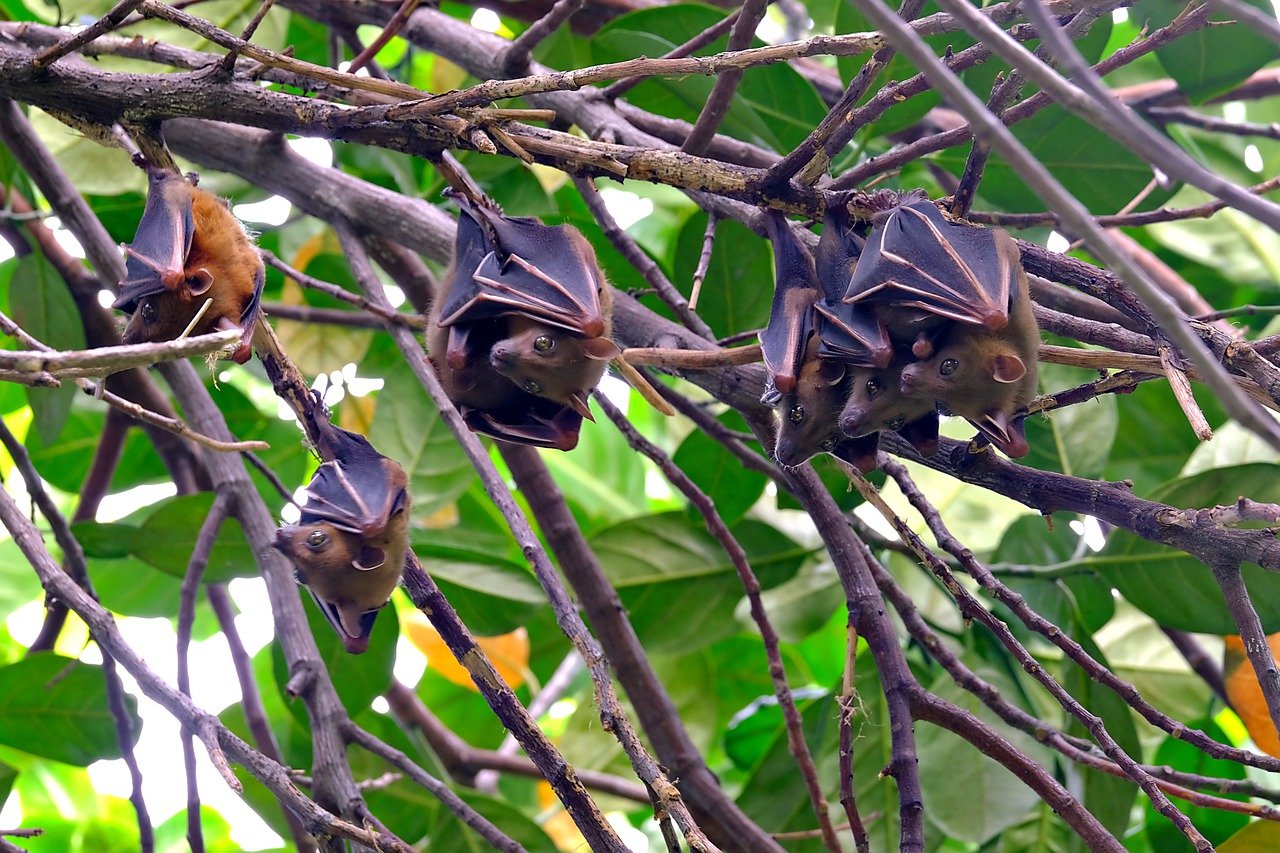
Understanding Batting Types
This article explores the various types of batting available for quilting, helping you make an informed decision based on your project's needs, desired finish, and personal preferences.
When it comes to quilting, the choice of batting can make or break your project. Different types of batting bring unique characteristics to the table, and understanding these can be a game changer. The three primary types of batting you’ll encounter are cotton, polyester, and blends. Each of these options has its own set of qualities that can significantly affect the final appearance and functionality of your quilt.
Cotton batting is often favored for its natural feel and breathability. It tends to drape beautifully, giving quilts a soft, cozy finish that many quilters adore. Additionally, cotton batting shrinks slightly after washing, which can enhance the texture of your quilt. However, it’s essential to note that cotton batting can be less durable than its synthetic counterparts, so consider this if your quilt will see heavy use.
On the other hand, polyester batting offers durability and resilience. It’s a fantastic option for quilts that need to withstand wear and tear, making it ideal for children's quilts or those meant for everyday use. Polyester batting also retains its loft over time, ensuring your quilt maintains its fluffy appearance. However, it can sometimes trap heat, making it less breathable than cotton, which might not be ideal for warmer climates.
Then we have the blended batting, which combines the best of both worlds. Typically made from a mix of cotton and polyester, blended batting offers a balance of softness, durability, and breathability. It’s a versatile choice that works well for a variety of quilting projects, providing you with the comfort of cotton and the resilience of polyester.
To help you visualize the differences, here’s a quick comparison table:
| Type | Material | Breathability | Durability | Ideal Use |
|---|---|---|---|---|
| Cotton | Natural Fiber | High | Moderate | Comfort quilts, bed covers |
| Polyester | Synthetic | Moderate | High | Everyday use, children's quilts |
| Blends | Combination | High | High | Versatile projects, all-purpose quilts |
Ultimately, the choice of batting depends on your individual preferences and the specific requirements of your quilting project. Whether you’re aiming for a snuggly quilt to keep you warm on chilly nights or a lightweight throw for summer evenings, understanding the types of batting available will guide you in making the best decision.
When selecting batting, consider factors like warmth, weight, and loft. Each factor influences the quilt's appearance and functionality, guiding you toward the best choice for your specific project.
The warmth provided by batting is crucial, especially for quilts intended for colder climates. Understanding how different materials retain heat can help you select the best option for your needs.
Loft refers to the thickness of the batting. High loft batting creates a fluffy appearance, while low loft offers a flatter finish, impacting both the quilt's aesthetics and its warmth.
Breathability is important for comfort. Natural fibers like cotton tend to be more breathable, making them ideal for quilts used in warmer conditions or for those who prefer a cooler sleep environment.
Selecting the correct size of batting is crucial for your quilt's dimensions. Ensure you measure accurately to avoid excess bulk or insufficient coverage when assembling your quilt layers.
Specialty batting options, such as fusible or organic batting, cater to specific needs and preferences. Exploring these alternatives can enhance your quilting experience and the final product's quality.
Fusible batting simplifies the quilting process by adhering to fabric layers, reducing shifting during quilting. This feature is especially beneficial for beginners or those looking for efficiency in their projects.
Organic batting options appeal to environmentally conscious quilters. Made from sustainable materials, these batts provide a guilt-free choice without compromising on quality or performance.
Proper care and maintenance of your quilt, including washing and storage, can extend its lifespan. Understanding how different batting materials react to cleaning is essential for preserving your creation.
1. Can I mix different types of batting in one quilt?
While it’s possible, it’s generally not recommended as different battings may react differently to washing and quilting techniques.
2. How do I wash my quilt with polyester batting?
Polyester batting quilts can usually be machine washed on a gentle cycle with cold water. Always check the care label for specific instructions.
3. Is organic batting worth the extra cost?
For those concerned about environmental impact, organic batting can be a great choice, offering sustainable options without sacrificing quality.

Factors to Consider
When diving into the world of quilting, one of the most crucial decisions you'll face is selecting the right batting. It’s not just about picking a fluffy material; it’s about understanding how different factors can dramatically influence the look, feel, and functionality of your quilt. So, what should you keep in mind? Let’s break it down!
First and foremost, consider warmth. The warmth provided by your batting is essential, especially if you plan to snuggle under your quilt during chilly nights. Different materials have varying heat retention properties. For instance, cotton batting is known for its breathable quality, making it suitable for all seasons, while polyester tends to trap heat more effectively, which can be ideal for those living in colder climates. Think of it like choosing the right jacket for the weather – you wouldn’t wear a lightweight windbreaker in a snowstorm, right?
Next up is weight. The weight of the batting can significantly affect the quilt's overall feel. Lightweight batting is easier to handle and is perfect for projects that require a bit of drape, like wall hangings or lap quilts. On the other hand, heavier batting might be necessary for bed quilts that need to provide extra warmth. It's like choosing between a feather pillow and a memory foam pillow; each serves a different purpose based on your comfort needs.
Another factor to consider is loft. Loft refers to the thickness of the batting, and it can create a substantial difference in your quilt's appearance. High loft batting gives a quilt a fluffy, puffy look, which can be visually appealing and add extra warmth. Conversely, low loft batting results in a flatter finish, making it easier to quilt and offering a more tailored look. Think of loft as the personality of your quilt; it can either be bold and vibrant or subtle and sophisticated.
Breathability is another essential factor. If you live in a warmer climate or prefer a cooler sleeping environment, you’ll want to choose batting that allows for airflow. Natural fibers like cotton excel in this area, providing a comfortable experience without overheating. Imagine sleeping under a heavy blanket on a hot summer night – it’s not a pleasant thought, is it? Breathable batting ensures you stay cozy without feeling suffocated.
Lastly, let’s talk about the size of your batting. It’s crucial to select the right dimensions to avoid excess bulk or insufficient coverage when assembling your quilt layers. Always measure your quilt top and add a few extra inches around the edges to ensure you have enough batting to work with. Think of it as cutting your fabric – measure twice, cut once! This simple step can save you from a lot of headaches later on.
In summary, when choosing batting for your quilt, consider factors like warmth, weight, loft, breathability, and size. Each of these elements plays a vital role in creating a quilt that not only looks great but feels great too. By understanding these factors, you can make an informed decision that aligns with your project's needs and your personal preferences.
- What is the best type of batting for a beginner? Cotton batting is often recommended for beginners due to its ease of use and versatility.
- Can I mix different types of batting in one quilt? Yes, you can mix batting types, but be mindful of how they will behave together, especially in terms of loft and weight.
- How do I care for my quilt after it’s completed? Always check the care instructions for your specific batting type; generally, gentle washing and air drying are recommended.

Warmth and Insulation
When it comes to quilting, warmth and insulation are two critical factors that can make or break your project, especially if you're creating a quilt intended for chilly nights. Imagine snuggling under a quilt on a frosty evening; the last thing you want is for it to feel like a thin sheet instead of a cozy blanket. So, how do you choose the right batting to achieve that snug warmth? It all boils down to understanding the materials at your disposal.
Different batting materials have varying abilities to retain heat. For instance, cotton batting is renowned for its natural insulating properties, making it a popular choice for those who want a warm quilt without excessive bulk. On the other hand, polyester batting tends to trap heat even better, which can be great for quilts designed for colder climates. If you’re aiming for a quilt that feels like a warm hug, polyester might be your best bet.
But wait, there’s more! The loft of the batting also plays a significant role in insulation. High loft batting creates more air pockets, which can trap heat effectively, giving your quilt that fluffy, inviting look. However, if you're leaning towards a more tailored finish, low loft batting can still provide warmth while keeping things sleek and modern. It’s like choosing between a fluffy marshmallow or a neatly shaped meringue—both are delicious, but they serve different purposes!
To help you visualize the differences, here’s a quick comparison:
| Batting Type | Warmth Level | Loft | Best For |
|---|---|---|---|
| Cotton | Moderate | Low to Medium | Year-round use |
| Polyester | High | High | Cold climates |
| Wool | Very High | Medium to High | Winter quilts |
In summary, when selecting your batting, consider not just the warmth but also the loft and how they will work together to create the perfect quilt for your needs. After all, a quilt is more than just a blanket; it’s a source of comfort and warmth, a piece of art, and often, a cherished family heirloom. So, take your time, weigh your options, and choose wisely!
- What is the best batting for warmth? Polyester batting is generally considered the best for warmth, especially in colder climates.
- Can I mix batting types in one quilt? Yes, you can mix batting types, but it's essential to consider how they will affect the quilt's overall appearance and warmth.
- How do I care for my quilt after it's finished? Most quilts can be machine washed on a gentle cycle, but always check the batting care instructions for best results.

High Loft vs. Low Loft
When it comes to batting, the terms high loft and low loft are often tossed around, but what do they really mean for your quilting project? Loft refers to the thickness or fluffiness of the batting, and it plays a significant role in the final look and feel of your quilt. Choosing between high loft and low loft can be likened to deciding between a fluffy cloud and a smooth pancake; both have their unique appeal, but they serve different purposes.
High loft batting creates a fluffy, three-dimensional effect that can add warmth and coziness to your quilt. This type of batting is perfect for projects where you want that extra snuggle factor, such as bed quilts or comforters intended for colder nights. The increased loft allows for better insulation, trapping air and heat within the fibers. However, this fluffy appearance can also mean that the quilt may require more quilting to keep everything in place. If you're looking for a quilt that feels like a warm hug, high loft batting might be your best friend.
On the other hand, low loft batting provides a sleeker, more streamlined look. It tends to be denser and flatter, which can be ideal for projects that require a more tailored finish, like wall hangings or intricate pieced quilts. This type of batting is often easier to quilt through, making it a favorite among those who enjoy detailed quilting patterns. If you're aiming for a quilt that showcases your piecing skills without the added bulk, low loft batting is the way to go.
To help you visualize the differences, consider the following table:
| Characteristic | High Loft Batting | Low Loft Batting |
|---|---|---|
| Thickness | Thick and fluffy | Thin and flat |
| Warmth | Higher warmth and insulation | Moderate warmth |
| Quilting Ease | May require more quilting | Easier to quilt through |
| Best For | Comforters, bed quilts | Wall hangings, detailed projects |
Ultimately, the choice between high loft and low loft batting boils down to personal preference and the specific requirements of your quilt. Are you looking for that extra warmth, or do you prefer a sleek finish? Understanding these differences can significantly enhance your quilting experience, ensuring that the final product meets your expectations. So, the next time you're at the fabric store, take a moment to consider how the loft of your batting will shape your quilt's personality!

Breathability
When it comes to quilting, is a key factor that shouldn't be overlooked. Imagine snuggling under a quilt that feels like a warm hug, yet doesn't trap heat like a sauna. That's the magic of choosing the right batting! Natural fibers, such as cotton, are renowned for their breathability. They allow air to circulate, keeping you comfortable whether you're in a chilly room or a warm summer night.
But why is breathability so important? Well, think of it this way: a quilt that lacks breathability can lead to overheating, making your cozy experience quite the opposite. If you're a hot sleeper or live in a warmer climate, opting for breathable batting can be a game-changer. It not only enhances comfort but also improves the overall sleep quality.
Let's take a closer look at the materials that excel in breathability:
| Material | Breathability Rating | Ideal Use |
|---|---|---|
| Cotton | High | Warm climates, all-season quilts |
| Polyester | Medium | Durable quilts, less focus on breathability |
| Wool | High | Cold climates, insulation |
| Blends | Variable | Versatile use, depends on blend |
As you can see from the table above, cotton and wool stand out as the top contenders for breathability. Cotton batting is a staple among quilters, not just for its softness but also for its ability to wick away moisture, keeping you dry and comfortable. On the other hand, wool batting, while a bit pricier, offers excellent insulation without sacrificing breathability, making it perfect for those chilly nights.
In conclusion, when selecting batting for your quilt, consider how important breathability is for your comfort. It's not just about how warm the quilt is; it's also about how it feels against your skin and how well it regulates temperature. Remember, a quilt that breathes is a quilt that keeps you cozy without overheating!
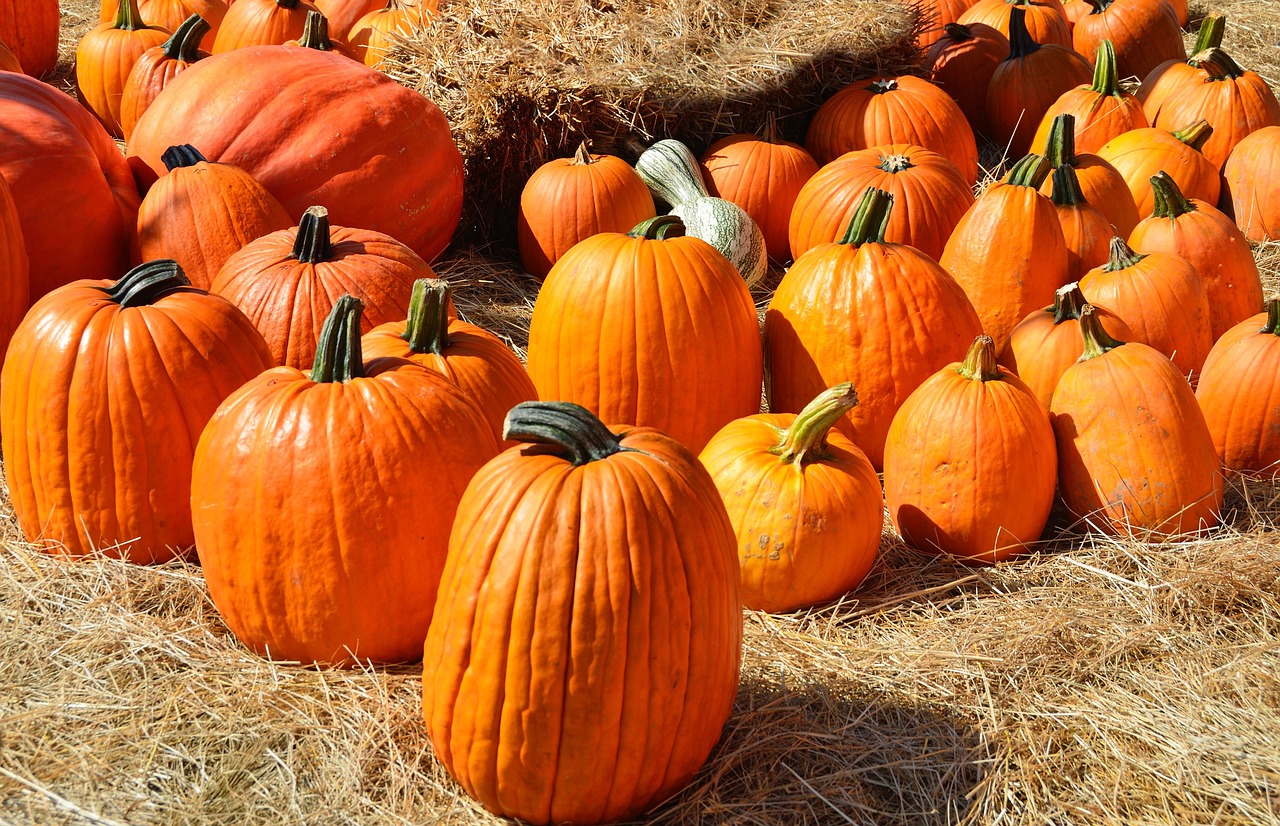
Choosing the Right Size
When it comes to quilting, one of the most critical aspects is ensuring that you choose the right size of batting for your project. You might be wondering, why is size so important? Well, just like a perfectly tailored suit, the right batting size can make or break the overall look and functionality of your quilt. If you select a batting that is too small, you risk having exposed areas that can lead to wear and tear over time. On the other hand, opting for a batting that is too large can create unnecessary bulk, making your quilt heavy and cumbersome.
To avoid these pitfalls, it's essential to measure your quilt layers accurately. Start by measuring the top layer of your quilt, which is typically the quilt top fabric. Add a few extra inches on each side to allow for shrinkage and any trimming you might want to do later. This extra allowance ensures that your batting covers the entire quilt top and provides a neat finish. For example, if your quilt top measures 60 inches by 80 inches, consider cutting your batting to at least 64 inches by 84 inches.
Here’s a quick reference table to help you visualize the relationship between quilt sizes and batting dimensions:
| Quilt Size | Recommended Batting Size |
|---|---|
| Twin | 66" x 90" |
| Full | 81" x 96" |
| Queen | 90" x 108" |
| King | 108" x 108" |
Additionally, consider the thickness of the batting when determining size. If you are using a high loft batting, it may compress slightly when quilted, so having a bit of extra size can compensate for that. Conversely, low loft batting tends to hold its shape better, but you still want to ensure you have enough coverage to avoid any gaps.
Finally, don’t forget about the seam allowances. When you sew your quilt layers together, the seams will take up some space, so it’s wise to account for this when cutting your batting. A good rule of thumb is to add about 1/2 inch to 1 inch to your batting dimensions to ensure you have enough to work with, especially if you are planning to quilt closely.
In summary, choosing the right size batting is essential for a successful quilting project. Take the time to measure accurately, consider the loft, and allow for seam allowances. By doing so, you’ll set yourself up for a beautiful quilt that not only looks great but also functions well for years to come.
- What happens if my batting is too small? If your batting is too small, it won't cover the entire quilt top, leading to exposed areas that can wear out quickly.
- Can I use leftover batting for smaller projects? Absolutely! Leftover batting can be perfect for smaller projects, such as table runners or wall hangings.
- How do I know if I need high loft or low loft batting? If you want a fluffy appearance and extra warmth, go for high loft. If you prefer a flatter finish, low loft is the way to go.
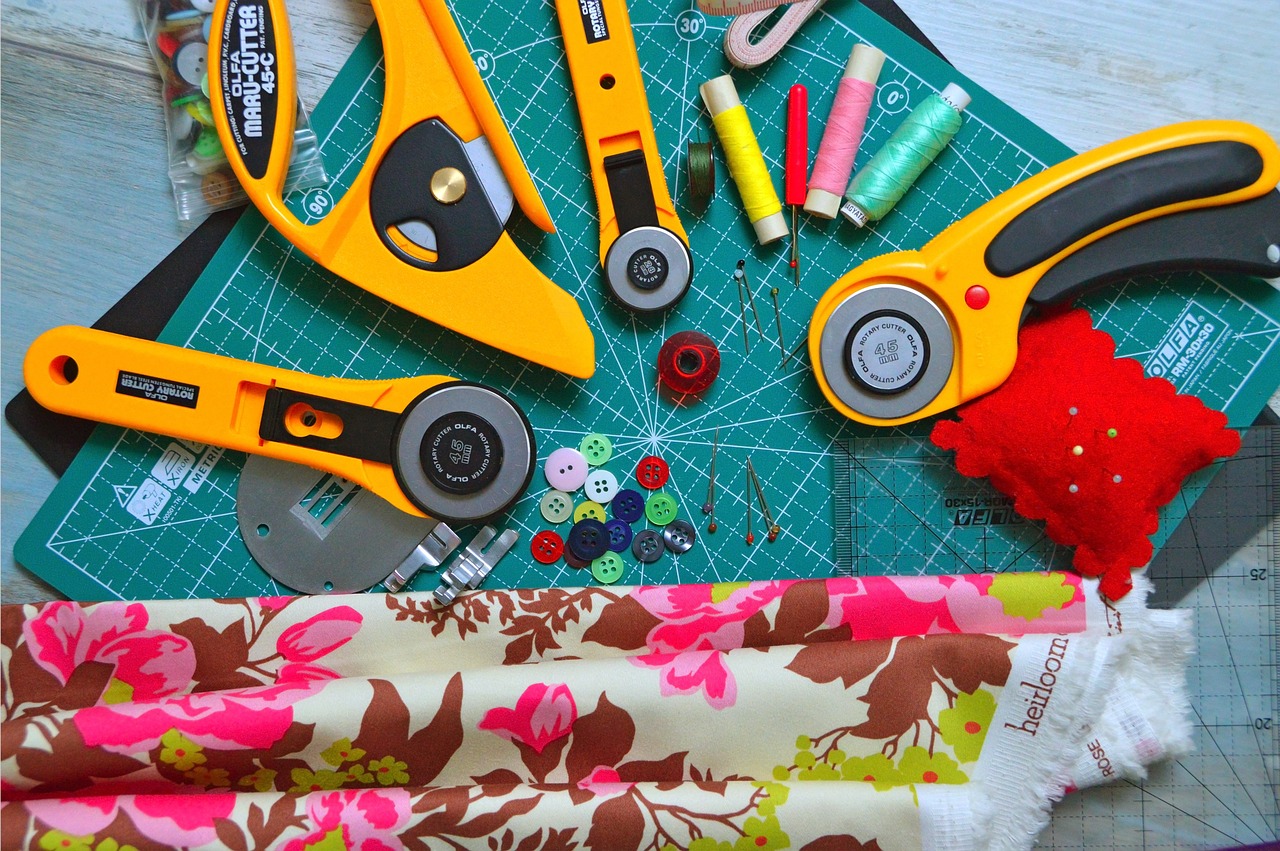
Specialty Batting Options
When it comes to quilting, the choice of batting can significantly influence not only the look but also the functionality of your quilt. Beyond the traditional cotton and polyester, there are that cater to unique needs and preferences. These options can elevate your quilting experience and enhance the quality of your final product. Let's dive into some of these exciting alternatives!
One of the standout choices is fusible batting. This innovative batting type is designed to adhere to the fabric layers, making it a game-changer for many quilters. Imagine being able to eliminate the constant shifting of fabric during the quilting process! Fusible batting simplifies your workflow, allowing you to focus more on creativity and less on technical challenges. This feature is especially beneficial for beginners who may find it daunting to manage multiple layers of fabric while sewing. It not only saves time but also provides a more stable foundation for your quilting project.
Another fantastic option for those who are environmentally conscious is organic batting. Made from sustainable materials, organic batting offers a guilt-free choice without sacrificing quality or performance. For quilters who care about their ecological footprint, this type of batting is a perfect fit. It’s not just about being eco-friendly; organic batting can also provide a softer feel and better breathability, enhancing the overall comfort of your quilt. When you snuggle under a quilt made with organic batting, you can take pride in knowing that you’ve made a choice that's kind to the planet.
As you explore these specialty options, consider how they align with your project’s requirements. For instance, if you’re working on a quilt intended for warmer climates, breathable organic batting may be the way to go. Conversely, if you’re looking for efficiency and ease, fusible batting could be your best ally. The right choice can transform your quilting experience, making it not only enjoyable but also rewarding.
To help you understand the differences better, here’s a quick comparison of traditional and specialty batting options:
| Type of Batting | Characteristics | Best For |
|---|---|---|
| Cotton | Soft, breathable, and natural | Everyday quilts and comfort |
| Polyester | Durable, lightweight, and affordable | Quilts needing resilience |
| Fusible | Adheres to fabric layers, reduces shifting | Beginners and quick projects |
| Organic | Sustainable, eco-friendly, and soft | Eco-conscious quilters |
In summary, specialty batting options like fusible and organic batting can transform your quilting projects. By understanding the unique characteristics of each type, you can make informed decisions that align with your personal style and project needs. Whether you’re a seasoned pro or just starting out, exploring these alternatives can lead to beautiful and functional quilts that you’ll cherish for years to come.
Q1: What is the main difference between fusible and traditional batting?
A1: Fusible batting has an adhesive that helps it stick to fabric layers, preventing shifting during quilting. Traditional batting does not have this feature, which may require additional pinning or basting.
Q2: Is organic batting more expensive than regular batting?
A2: Generally, organic batting can be a bit more expensive due to the sustainable materials used in its production. However, many quilters find the benefits worth the investment.
Q3: Can I use fusible batting for all types of quilts?
A3: While fusible batting is great for many projects, it may not be suitable for quilts that require heavy quilting or intricate designs, as the adhesive can limit the flexibility of the fabric.
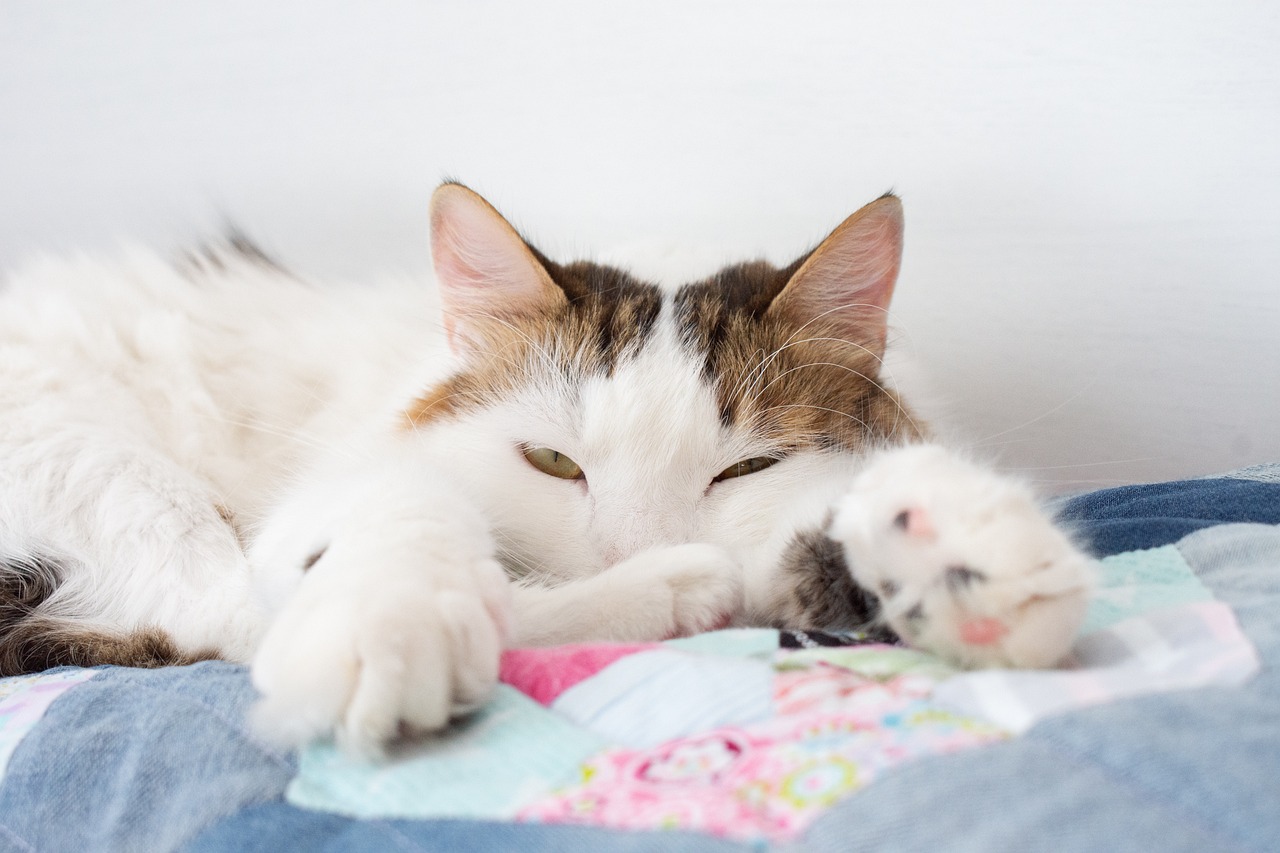
Fusible Batting Benefits
This article explores the various types of batting available for quilting, helping you make an informed decision based on your project's needs, desired finish, and personal preferences.
Different types of batting, such as cotton, polyester, and blends, offer unique characteristics that affect the final quilt. Understanding these types is essential for choosing the right one for your project.
When selecting batting, consider factors like warmth, weight, and loft. Each factor influences the quilt's appearance and functionality, guiding you toward the best choice for your specific project.
The warmth provided by batting is crucial, especially for quilts intended for colder climates. Understanding how different materials retain heat can help you select the best option for your needs.
Loft refers to the thickness of the batting. High loft batting creates a fluffy appearance, while low loft offers a flatter finish, impacting both the quilt's aesthetics and its warmth.
Breathability is important for comfort. Natural fibers like cotton tend to be more breathable, making them ideal for quilts used in warmer conditions or for those who prefer a cooler sleep environment.
Selecting the correct size of batting is crucial for your quilt's dimensions. Ensure you measure accurately to avoid excess bulk or insufficient coverage when assembling your quilt layers.
Specialty batting options, such as fusible or organic batting, cater to specific needs and preferences. Exploring these alternatives can enhance your quilting experience and the final product's quality.
Fusible batting is a game-changer for quilters, especially those who are just starting out or looking to streamline their quilting process. One of the most significant advantages of fusible batting is its ability to adhere to fabric layers. This feature minimizes shifting during quilting, which can be a common frustration for many quilters. Imagine working on a project, only to find that your layers have moved out of alignment. With fusible batting, that worry is significantly reduced.
Additionally, fusible batting can save you time. Because it sticks to your fabric, you can skip some of the traditional basting steps, allowing you to get right to the fun part—quilting! This efficiency can be particularly beneficial when you're working on larger projects or when you're on a tight deadline.
Moreover, fusible batting comes in various materials, including cotton and blends, giving you the flexibility to choose the right type for your specific project. Whether you're making a cozy quilt for winter or a lightweight throw for summer, fusible batting can meet your needs.
Here are some key benefits of using fusible batting:
- Reduces Shifting: Keeps layers in place during quilting.
- Saves Time: Eliminates some basting steps.
- Versatile Options: Available in different materials and lofts.
- Ideal for Beginners: Simplifies the quilting process.
In summary, fusible batting not only enhances the overall quilting experience but also helps produce a more polished and professional-looking final product. So, if you're looking for a way to make your quilting projects easier and more enjoyable, consider giving fusible batting a try!
Proper care and maintenance of your quilt, including washing and storage, can extend its lifespan. Understanding how different batting materials react to cleaning is essential for preserving your creation.
Q1: What is fusible batting?
A1: Fusible batting is a type of batting that has an adhesive on one side, allowing it to stick to fabric layers, minimizing shifting during the quilting process.
Q2: Can I wash quilts made with fusible batting?
A2: Yes, you can wash quilts made with fusible batting, but it's essential to follow the manufacturer's care instructions to maintain its integrity.
Q3: Is fusible batting suitable for all types of quilts?
A3: Fusible batting is versatile and can be used for various quilt types, but it's always best to consider the specific requirements of your project.
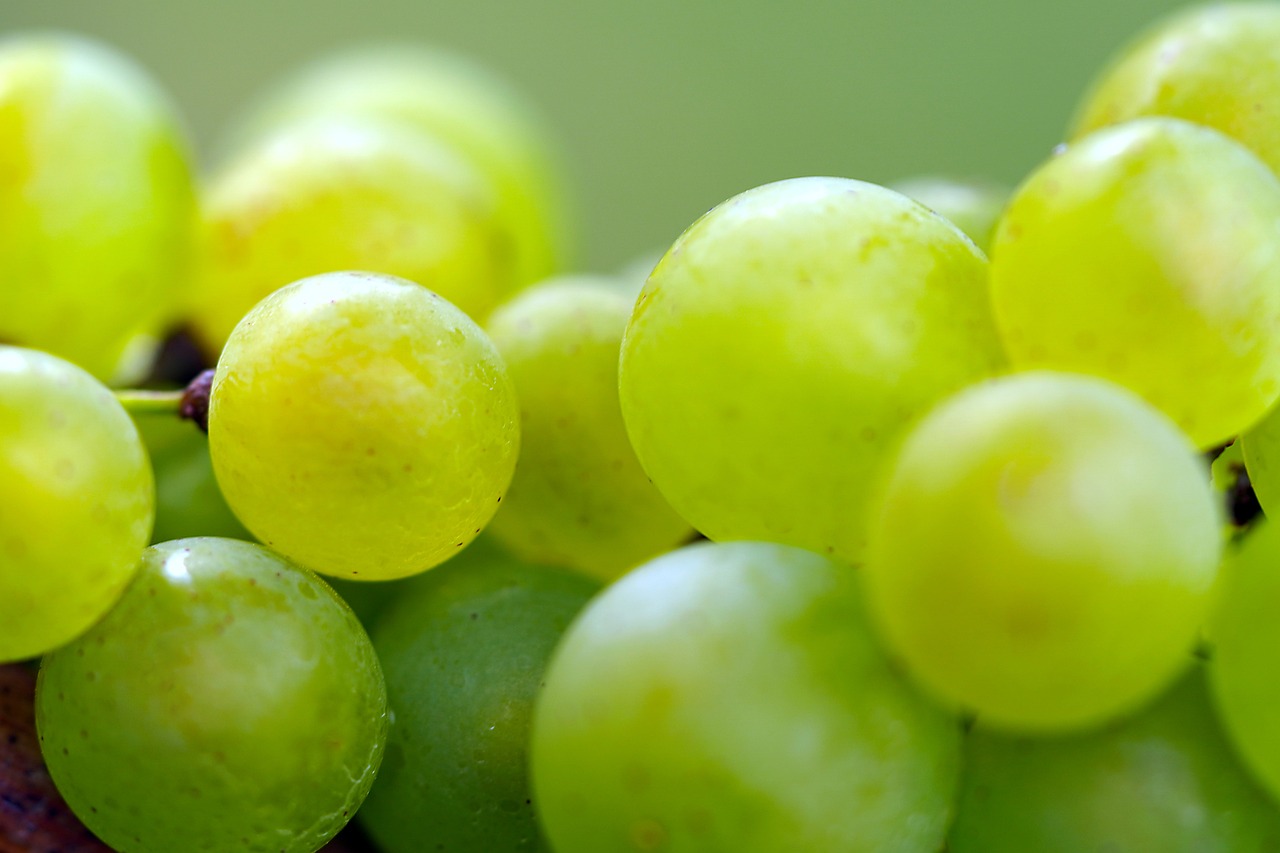
Organic and Eco-Friendly Choices
In today's world, where sustainability is more than just a buzzword, many quilters are turning to organic and eco-friendly batting options. These choices are not only kind to the planet but also provide a unique touch to your quilting projects. Imagine wrapping yourself in a quilt that is not only beautiful but also made from materials that are free from harmful chemicals and pesticides. That's the beauty of organic batting!
Organic batting is typically made from natural fibers like cotton, wool, or bamboo, sourced from farms that adhere to strict organic farming practices. This means no synthetic fertilizers or pesticides are used, ensuring that the fibers are as pure as nature intended. By choosing organic batting, you are not just investing in your quilt, but also contributing to a healthier environment. It's like giving a gift to Mother Earth while creating something cozy for yourself!
One of the standout features of organic batting is its breathability. Natural fibers allow air to circulate, making these batts ideal for quilts intended for warmer climates or for those who tend to sleep hot. You might be wondering, "But what about durability?" Well, organic batting is surprisingly robust! When cared for properly, these batts can withstand the test of time, just like their conventional counterparts.
Another aspect to consider is the feel. Organic batting often has a softer, more luxurious texture compared to synthetic options. This can enhance the overall tactile experience of your quilt, making it even more enjoyable to snuggle under. Plus, if you're sensitive to allergens or chemicals, organic batting can provide a more comfortable sleep environment.
For those who are environmentally conscious, many brands now offer eco-friendly certifications, ensuring that the batting meets specific sustainability standards. This transparency allows quilters to make informed decisions that align with their values. Some popular organic batting brands include:
| Brand | Material | Certification |
|---|---|---|
| Hobbs Heirloom Organic Cotton Batting | 100% Organic Cotton | GOTS Certified |
| Warm Company Warm & Natural | 100% Natural Cotton | Oeko-Tex Certified |
| Quilt Batting by The Cotton Company | Organic Cotton Blend | USDA Organic |
In conclusion, choosing organic and eco-friendly batting not only elevates the quality of your quilting project but also supports sustainable practices. It's a win-win situation! So next time you're shopping for batting, consider going green. Your quilt—and the planet—will thank you!
- What is organic batting made of? Organic batting is typically made from natural fibers like cotton, wool, or bamboo that are grown without harmful chemicals.
- Is organic batting more expensive than conventional batting? While it can be slightly more expensive, many quilters find the benefits worth the investment.
- How do I care for my quilt with organic batting? Always check the manufacturer's care instructions, but generally, washing in cold water and air drying is recommended to maintain the integrity of organic fibers.

Care and Maintenance
Taking care of your quilt is like nurturing a delicate plant; it requires attention and the right conditions to thrive. Proper can significantly extend the lifespan of your quilt, ensuring it remains as beautiful as the day you finished it. The first step in this process is understanding how different types of batting react to washing and cleaning. For instance, cotton batting tends to be quite durable and can withstand machine washing, while polyester batting may require a gentler approach to maintain its loft and integrity.
When it comes to washing your quilt, always check the manufacturer's instructions regarding care recommendations. Most quilts can be safely machine washed on a gentle cycle with cold water. However, if your quilt features delicate fabrics or embellishments, hand washing may be the preferred method. After washing, avoid wringing out excess water, as this can distort the quilt's shape. Instead, gently roll it in a towel to absorb moisture.
Drying is equally important. While some batting can handle the heat of a dryer, others might be more sensitive. If you're unsure, air drying is a safe bet. Lay your quilt flat on a clean surface or hang it over a clothesline, ensuring it’s protected from direct sunlight, which can fade colors over time. If you do choose to use a dryer, opt for a low heat setting to prevent any potential shrinkage or damage.
Storage is another crucial aspect of quilt care. When not in use, store your quilt in a cool, dry place. Avoid folding it in the same spot repeatedly, as this can create creases and weaken the fibers over time. Instead, consider rolling your quilt or using acid-free tissue paper to help maintain its shape. If you live in a humid climate, using a breathable cotton storage bag can also help protect your quilt from moisture and pests.
Lastly, if your quilt starts to show signs of wear or stains, don't panic! Spot cleaning with a mild detergent can often do the trick. For more significant repairs, consider consulting a professional quilter or a local quilting group. They can offer valuable advice or assistance in restoring your beloved quilt to its former glory.
- How often should I wash my quilt? It depends on usage, but generally, washing every few months or when visibly soiled is a good rule of thumb.
- Can I use bleach on my quilt? It's best to avoid bleach, as it can damage the fibers and colors. Instead, use a gentle detergent.
- What’s the best way to store a quilt long-term? Store it in a cool, dry place, and avoid folding it in the same spot to prevent creasing.
- Is it safe to iron my quilt? Yes, but use a low heat setting and place a cloth between the iron and the quilt to prevent damage.
Frequently Asked Questions
- What type of batting is best for my quilting project?
The best type of batting depends on your project’s needs. Cotton batting is great for warmth and breathability, while polyester offers durability and is often more affordable. Blends can provide a balance of both. Consider what you want your quilt to feel like and how it will be used!
- How does loft affect my quilt?
Loft refers to the thickness of the batting. High loft batting gives a fluffy look and can add warmth, making it perfect for cozy quilts. On the other hand, low loft batting results in a flatter finish, which is ideal for detailed quilting designs. Think about the aesthetic you want to achieve!
- Can I use fusible batting for my quilt?
Absolutely! Fusible batting is a fantastic choice, especially for beginners. It sticks to your fabric layers, reducing the chances of shifting while quilting. This means less hassle and a more enjoyable quilting experience!
- What should I consider when choosing batting size?
Choosing the right size of batting is crucial. Measure your quilt dimensions accurately to ensure your batting fits well without excess bulk. You want it to cover your quilt perfectly, so take your time with those measurements!
- How do I care for my quilt after it's finished?
Proper care can extend the life of your quilt. Always check the batting material for specific washing instructions. Generally, gentle washing and air drying are best. Avoid harsh detergents to keep your quilt looking fresh and vibrant!
- Are there eco-friendly batting options?
Yes! There are organic and eco-friendly batting options available. These batts are made from sustainable materials, providing a guilt-free choice for environmentally conscious quilters. You can enjoy your craft while being kind to the planet!


















